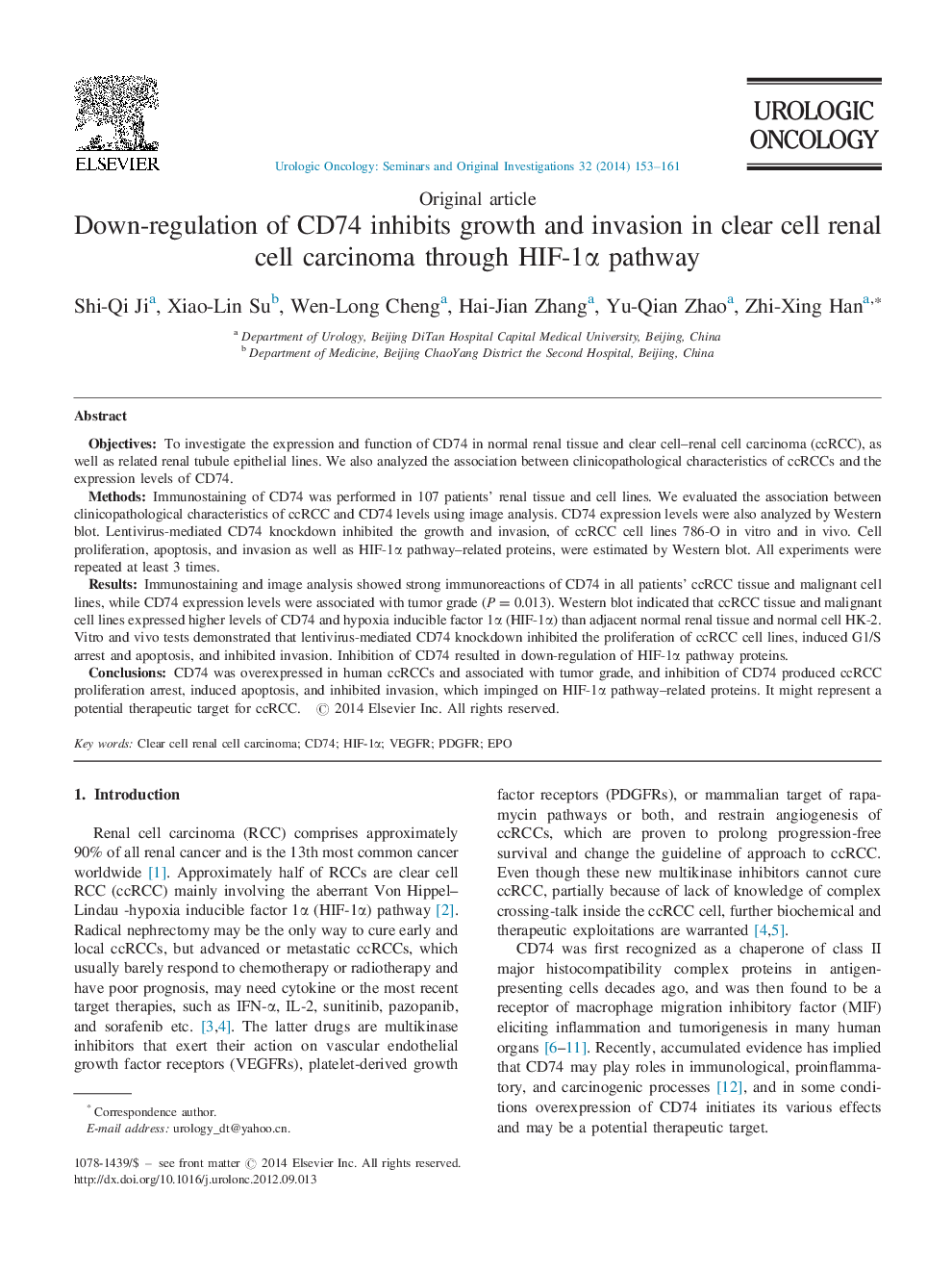| Article ID | Journal | Published Year | Pages | File Type |
|---|---|---|---|---|
| 3999745 | Urologic Oncology: Seminars and Original Investigations | 2014 | 9 Pages |
ObjectivesTo investigate the expression and function of CD74 in normal renal tissue and clear cell–renal cell carcinoma (ccRCC), as well as related renal tubule epithelial lines. We also analyzed the association between clinicopathological characteristics of ccRCCs and the expression levels of CD74.MethodsImmunostaining of CD74 was performed in 107 patients' renal tissue and cell lines. We evaluated the association between clinicopathological characteristics of ccRCC and CD74 levels using image analysis. CD74 expression levels were also analyzed by Western blot. Lentivirus-mediated CD74 knockdown inhibited the growth and invasion, of ccRCC cell lines 786-O in vitro and in vivo. Cell proliferation, apoptosis, and invasion as well as HIF-1α pathway–related proteins, were estimated by Western blot. All experiments were repeated at least 3 times.ResultsImmunostaining and image analysis showed strong immunoreactions of CD74 in all patients' ccRCC tissue and malignant cell lines, while CD74 expression levels were associated with tumor grade (P = 0.013). Western blot indicated that ccRCC tissue and malignant cell lines expressed higher levels of CD74 and hypoxia inducible factor 1α (HIF-1α) than adjacent normal renal tissue and normal cell HK-2. Vitro and vivo tests demonstrated that lentivirus-mediated CD74 knockdown inhibited the proliferation of ccRCC cell lines, induced G1/S arrest and apoptosis, and inhibited invasion. Inhibition of CD74 resulted in down-regulation of HIF-1α pathway proteins.ConclusionsCD74 was overexpressed in human ccRCCs and associated with tumor grade, and inhibition of CD74 produced ccRCC proliferation arrest, induced apoptosis, and inhibited invasion, which impinged on HIF-1α pathway–related proteins. It might represent a potential therapeutic target for ccRCC.
